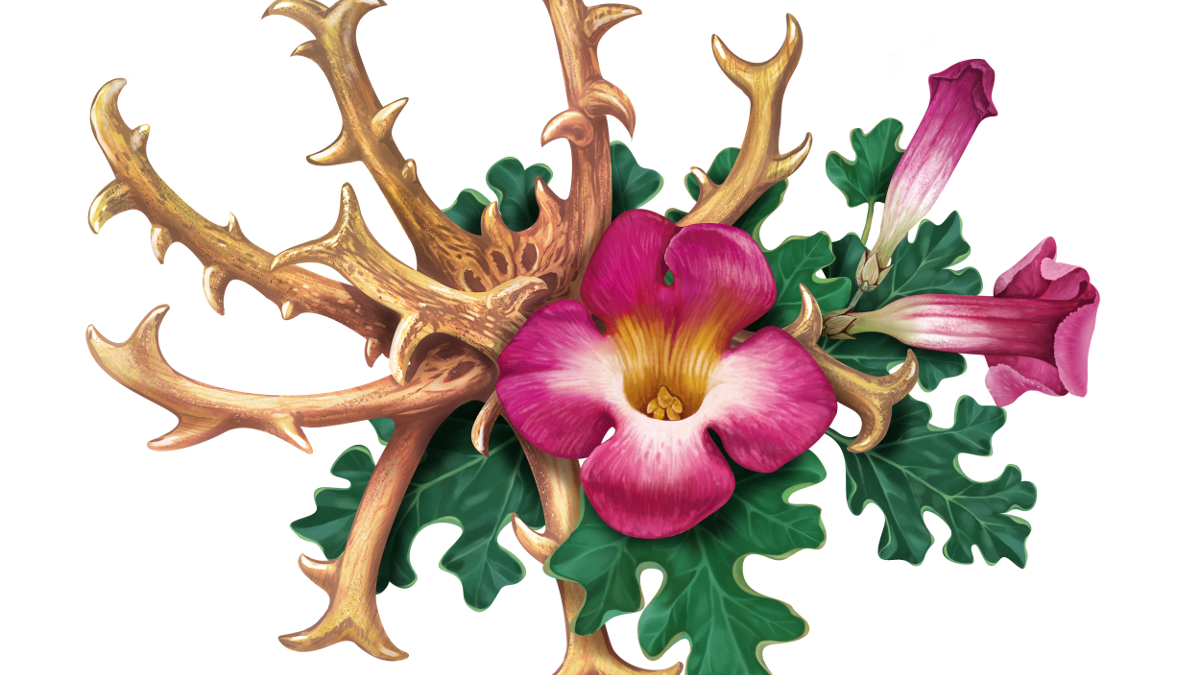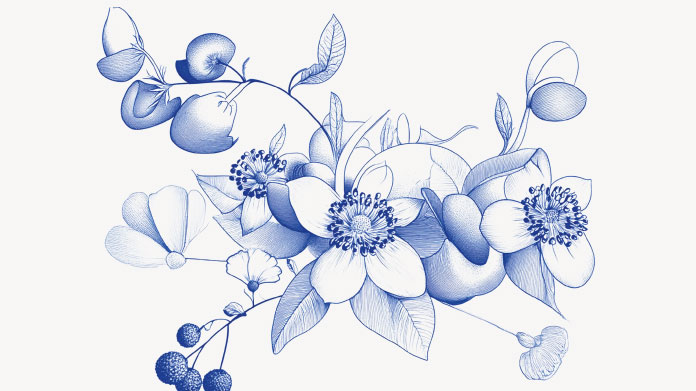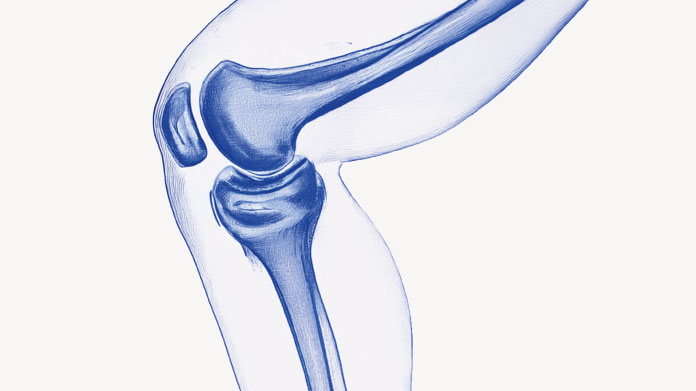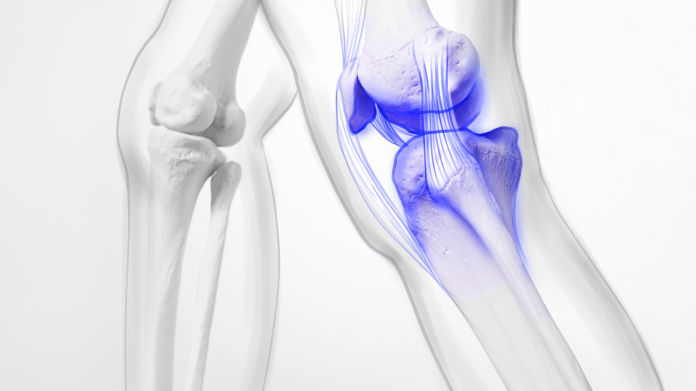3 benefits of Harpagophytum , the plant that supports joint health
Have you heard of this African plant, commonly known as ‘devil’s claw’ ? Discover how Harpagophytum supports the health of your joints, amongst other benefits.

What exactly is Harpagophytum?
This somewhat complex-sounding plant is better known as ‘devil’s claw’ or ‘grapple plant’. Part of the Pedaliaceae or sesame family, Harpagophytum South Africa and Madagascar.
The proven benefits of the plant come from its deep roots which contain calcium, iron, copper, vitamin C, vitamin A, and potassium along with many other active ingredients.
A plant recognised for maintaining good joint health
First and foremost, several clinical trials have shown that Harpagophytum supports healthy joint function (1). Remarkably, a comparative study of 122 subjects suggests that devil’s claw is almost as effective as a drug used to treat osteoarthritis (diacerein) (2-3).
Similarly, a two-month UK trial of 259 patients found that taking Harpagophytum resulted in a significant reduction in joint discomfort (4). Indeed, ESCOP, (the European Scientific Cooperative on Phytotherapy) recommends taking devil’s claw to help maintain joint health and flexibility.
This plant is also believed to ease discomfort in the lower back (5-6).
Harpagophytum may help to stimulate both appetite… and the feeling of satiety
It has also been suggested that Harpagophytum helps to restore appetite… as well as increase the sensation of satiety. This may be due to its potential interaction with the hunger hormone (7).
One study showed that mice given powdered devil’s claw tended to eat less food than those given a placebo (8). Harpagophytum is thus sometimes used to support weight management and even to prevent obesity (9).
Devil’s claw may play a role in ensuring a healthy digestive system
Bid farewell to constipation, diarrhoea and flatulence! Clinical trials suggest that extracts of devil’s claw may significantly reduce - and even eliminate - digestive discomfort (10). It may thus help improve digestion and facilitate healthy elimination of waste products.
Harpagophytum may improve nutrient absorption in the gut, too. It is also traditionally used to help reduce cholesterol (11). Last but not least, devil’s claw may also have antioxidant properties, and may therefore contribute to delayed ageing of cells (12).
Some supplements formulated to support joint health
Is your quality of life adversely affected by joint or muscle pain? Are you keen to find effective, natural relief? Then try Super Harpagophytum. This natural dietary supplement will help to both maintain the health of your joints and combat oxidative stress.
In addition, you could combine it with Super Boswellia. This Boswellia serrata supplement, standardised to 20% AKBA (its most active ingredient), also plays an active part in maintaining joint health.
You can, of course, always opt for a joint-specific formulation such as Joint Support Formula, which combines chondroitin and marine-source glucosamine.
Note: there are, however, certain contraindications for this supplement. Those suffering from diabetes, high blood pressure, stomach ulcers or gallstones should not take Harpagophytum. The same applies to women who are pregnant or breastfeeding.
References
- Devil's Claw (Harpagophytum procumbens) as a treatment for osteoarthritis: a review of efficacy and safety. Brien S, Lewith GT, McGregor G. J AlternComplement Med. 2006 Dec;12(10):981-93. Review.
- Chantre P, Cappelaere A, et al. Efficacy and tolerance of Harpagophytum procumbens versus diacerhein in treatment of osteoarthritis. Phytomedicine. 2000 Jun,7
- Efficacy and Tolerance of Harpagophytum Procumbens Versus Diacerhein in Treatment of Osteoarthritis, P Chantre 1, A Cappelaere, D Leblan, D Guedon, J Vandermander, B Fournie, 2000 Jun 7
- Effectiveness and safety of Devil's Claw tablets in patients with general rheumatic disorders Mary Warnock Douglas McBean Andreas Suter Jen Tan Patricia Whittaker 20 September 2007
- https://www.lombalgie.fr/comprendre/quelques-chiffres/
- Chrubasik S, Junck H, et al. Effectiveness of Harpagophytum extract WS 1531 in the treatment of exacerbation of low back pain: a randomized, placebo-controlled, double-blind study.Eur J Anaesthesiol 1999 Feb,16
- Devil's Claw to Suppress Appetite—Ghrelin Receptor Modulation Potential of a Harpagophytum procumbens Root Extract, Cristina Torres-Fuentes, Wessel F. Theeuwes, Michael K. McMullen, Anna K. McMullen, Timothy G. Dinan, John F. Cryan, and Harriët Schellekens, 2014 Jul 28.
- The Role of Leptin and Ghrelin in the Regulation of Food Intake and Body Weight in Humans: A Review, M D Klok, S Jakobsdottir, M L Drent, 2007 Jan,8
- Devil's Claw to Suppress Appetite—Ghrelin Receptor Modulation Potential of a Harpagophytum procumbens Root Extract, Cristina Torres-Fuentes, Wessel F. Theeuwes, Michael K. McMullen , Anna K. McMullen, Timothy G. Dinan , John F. Cryan, and Harriët Schellekens, 2014 Jul 28.
- European Scientific Cooperative on Phytotherapy (Ed). Harpagophyti radix, ESCOP Monographs on the Medicinal Uses of Plants Drugs, Centre for Complementary Health Studies, Université d'Exeter, Grande-Bretagne, 1996.
- Sécurité des patients et protection des plantes médicinales : lignes directrices destinées à une industrie qui vaut 60 milliards de dollars, 10 FÉVRIER 2004
- Antioxidant Activity and Bioactive Constituents of the Aerial Parts of Harpagophytum Procumbens Plants, 15 Apr 2014
Keywords
12 Days
A Product worth waiting for when not…
A Product worth waiting for when not available and then arriving as a surprise!
DOMINIC
14 Days
On time shipping
On time shipping
GEORGE Verne
15 Days
Ordering was easy and the product was…
Ordering was easy and the product was delivered with no problems. Appreciated that I was notified when it would arrive. Thanks!
MascarC
21 Days
Great customer service - responsive …
I ordered from them and my item was unavailable for sometime. I was super happy when they reactivated my order and shipped my item which arrived very quickly. Great customer service.
Ruth Rueter
22 Days
Super fast shipping
Super fast shipping
Donald Borling
25 Days
Reputable companysearch and the number of…
The research and the number of selection of products.
NAKHJAVAN Shervin
38 Days
The Anti Aromatase is a great product
The Anti Aromatase is a great product. You just need to have constant inventory. Recently this product has been out of stock.
GEORGE Verne
40 Days
Great help on chat
Great help on chat. Knowledgeable and friendly.
Jason Argos
43 Days
Customer service was fast and friendly.
Customer service helped to stop the transaction process of the subscription. I appreciated that.
Greenie
43 Days
I order here due to the high quality of…
I order here due to the high quality of the products and the quick delivery of items - thank you
Barbara J
45 Days
SuperSmart's Eye Pressure supplements: highly recommended!
I purchase SuperSmart's Eye Pressure supplements regularly for over 5 years, and gotta say they are truly a wonderful product for my Glaucoma. Highly recommended if you have eye pain from your Glaucoma.
D. Martinez
49 Days
Quick service
Quick service
MONELL
50 Days
Speedy service.
Speedy service.
ROSENTHAL Marvin
54 Days
Clear website- Efficient
Clear website. Excellent search engine and fast delivery!
Mohamad Hussein
56 Days
They have great products.
They have great products.
Vickie



